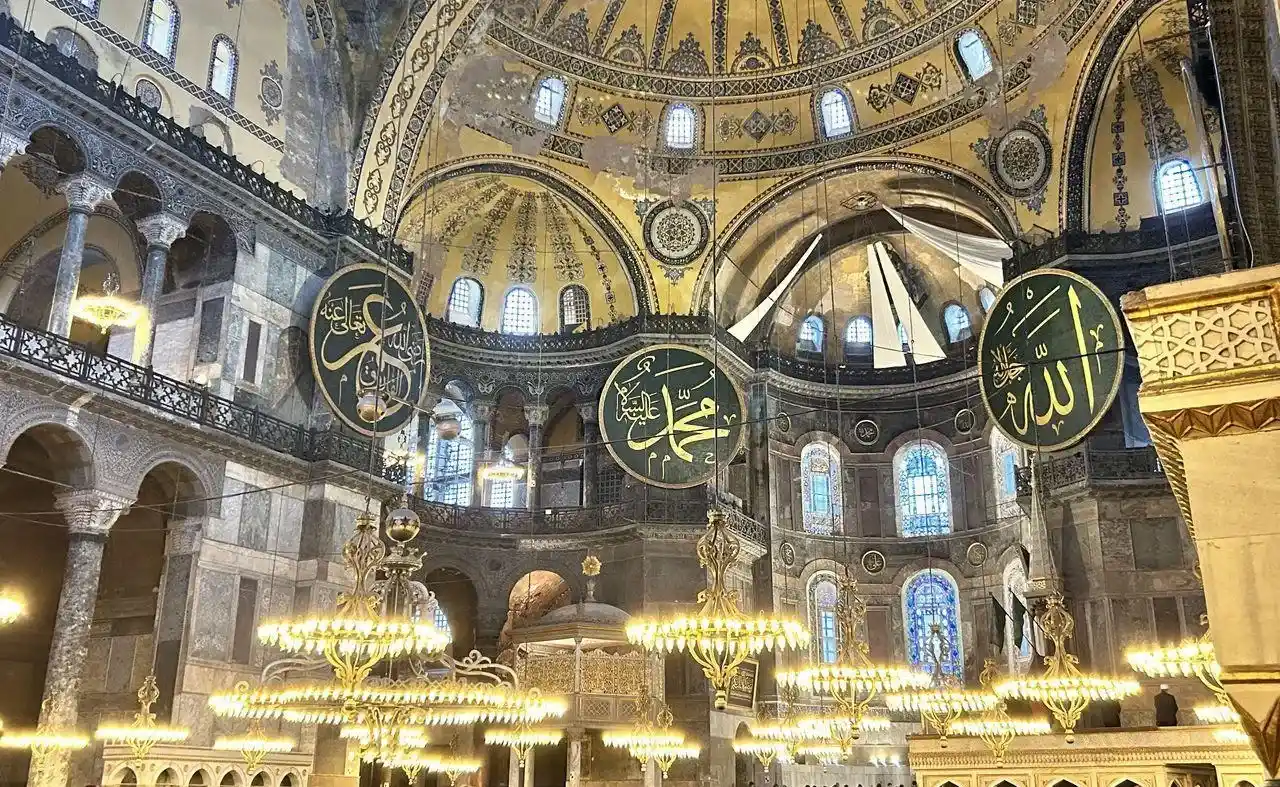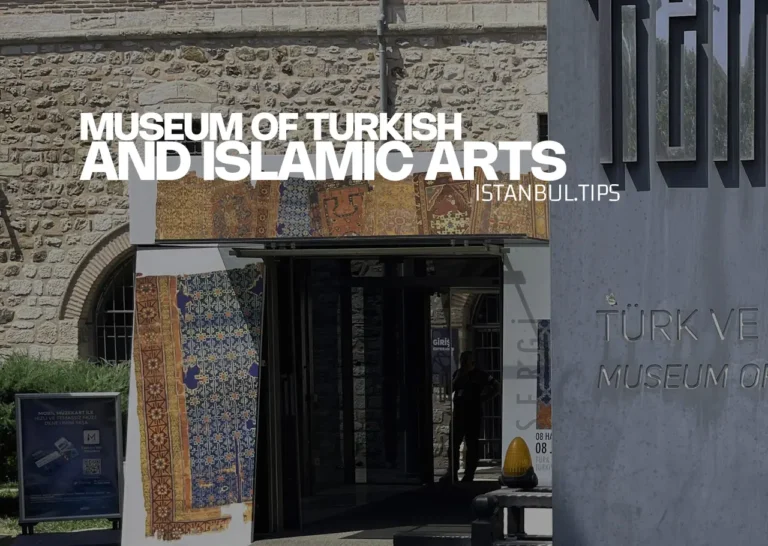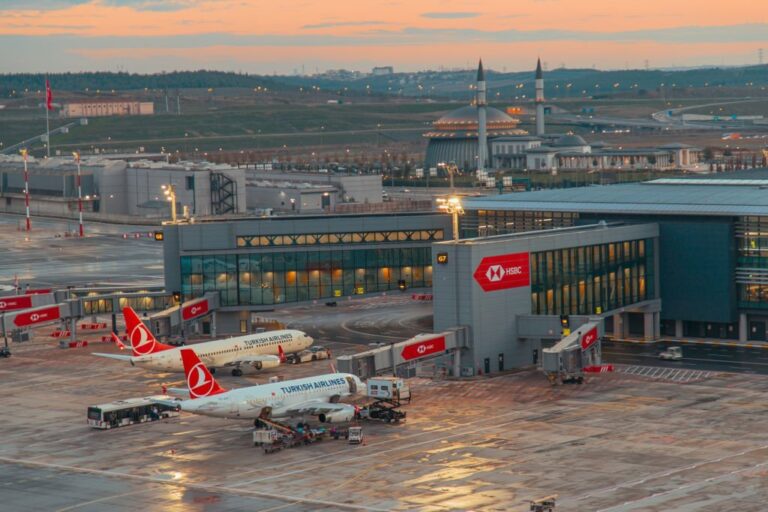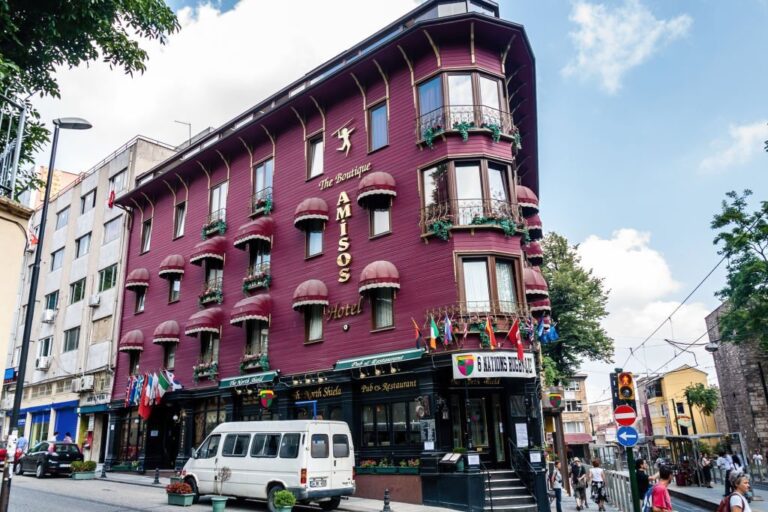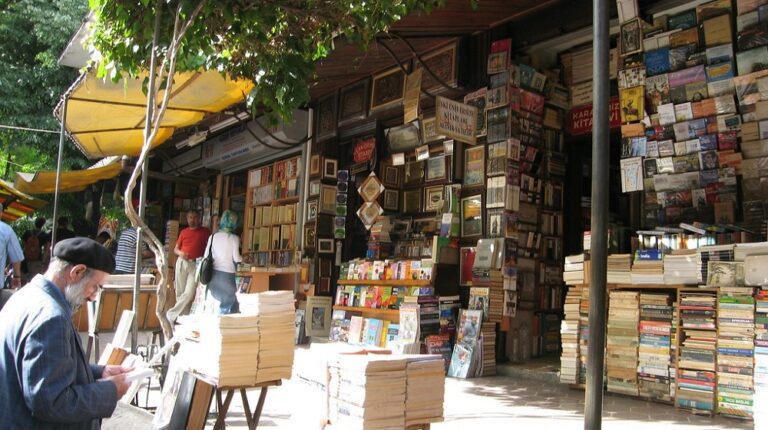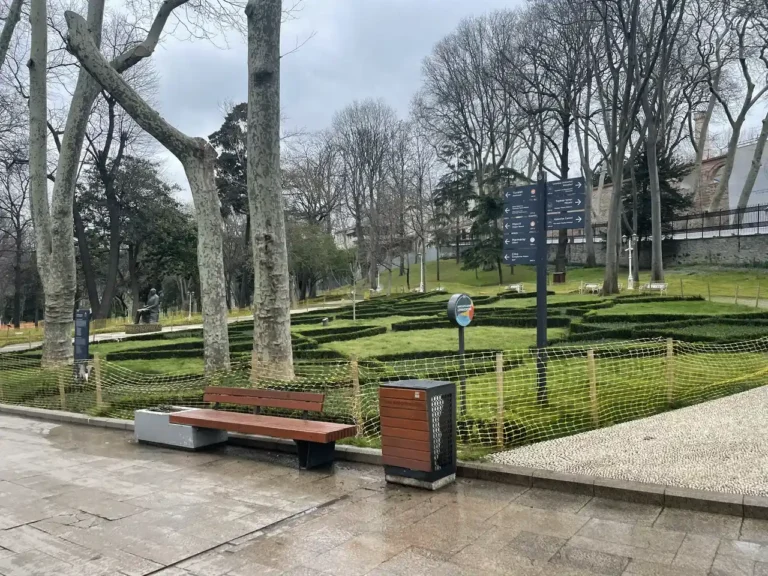Hagia Sophia Opening Hours and Tickets: Travel Info (2025)
Pay Once and Have Free Attractions Entry for 7 days
Hagia Sophia. This ancient wonder, with its dome floating above a sea of mosaics, has lived many lives: a cathedral, a mosque, a museum, and now a mosque and museum again. Yet, no matter its status, it remains a symbol of Istanbul itself—a city where empires meet and history never stands still.
If you’re planning a visit, this guide will walk you through what you need to know about ticket prices, how to get there, and the latest regulations.

Essential Information About Hagia Sophia (2025 Updated)
Location of Hagia Sophia
Sultan Ahmet, Ayasofya Meydanı No:1, 34122 Fatih/İstanbul
Entry Cost
The ticket to Hagia Sophia Museum costs 800 TL or 25€ for tourists, 250 TL for Turkish citizens.
Opening Hours
The museum section of Hagia Sophia is open daily from 09:00 to 19:30.
What to See
See Byzantine mosaics, massive dome, Imperial Gate, towering minarets, upper galleries museum, marble doors, and the Omphalion.
Entry Points
- For Muslims: Main hall entry for prayer (Namaz) only.
- For Tourists: Entry through the southern vestibule to the upper floors.
Amenities
- Free WiFi available
- Audio Guide in 23 languages
- Headphones available on-site for 100 TL
- VR Technology: the mosaics coming to life!
No Museum Passes
Müzekart, Museum Pass Türkiye, and Museum Pass Istanbul are not valid.
Dress-Code
Women must wear a headscarf, and both men and women should avoid open hands and legs.
Best Time to Visit
The best time to visit is from 10 AM to 12 PM when it’s less crowded.
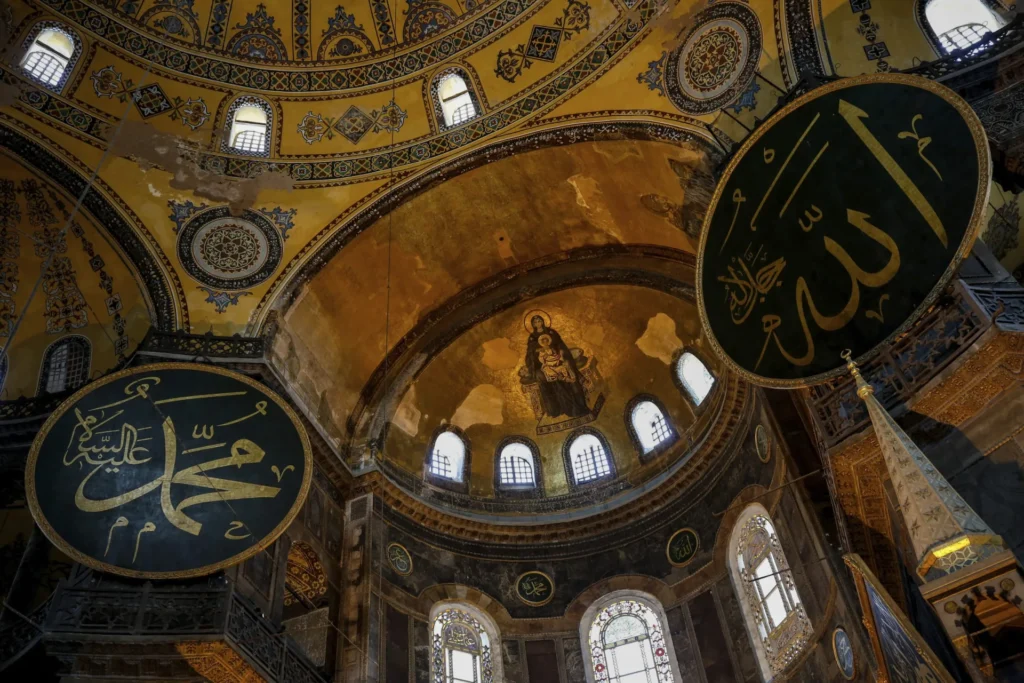
Why Hagia Sophia Is So Special: History & Architecture
The Hagia Sophia, a UNESCO World Heritage Site, is one of Istanbul’s most iconic landmarks.
Don’t Miss The Best Tours and Cruises in Istanbul
Is the Hagia Sophia a Mosque, Museum, or Church?
Hagia Sophia: Status 2025
Museum on the Upper Floor
Prayer Hall for Muslims
*Note: We advise against breaking any rules. If you’re not a Muslim, please respect the guidelines to avoid offending others. Also, women are generally restricted from the central hall but can access the women’s section on the left.
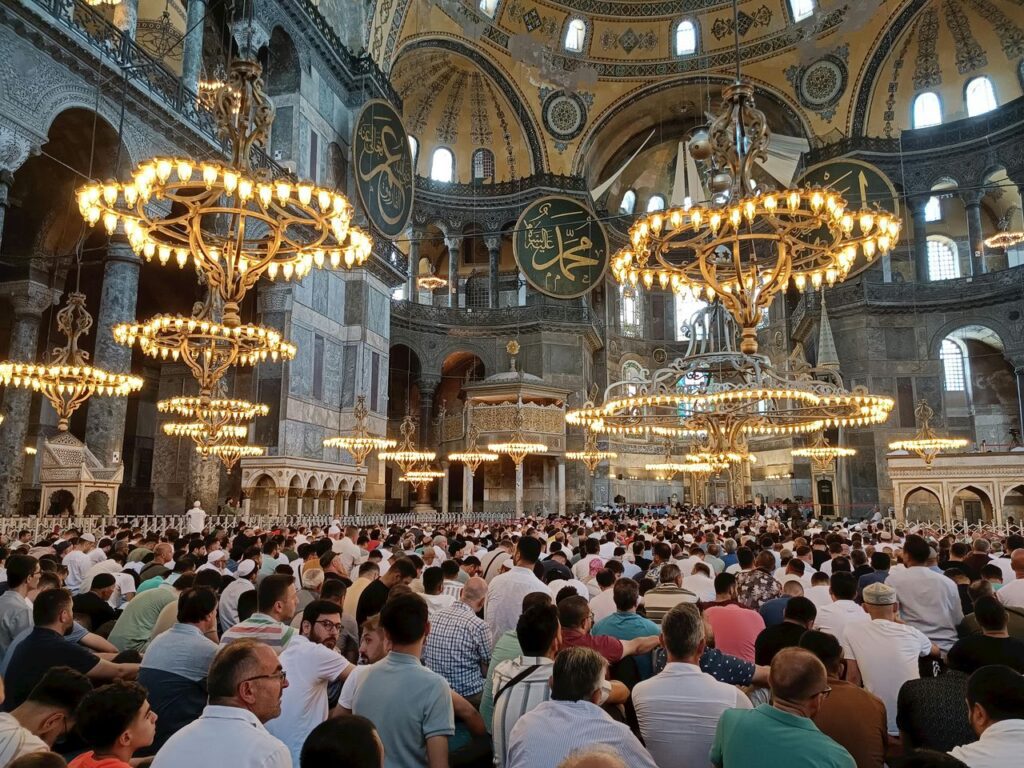
Hagia Sophia Ticket Prices 2025
850 TL
- Standard Ticket: Entry to Hagia Sophia costs €25 or 850 TL or €28 if you buy online. The cheapest option is to buy your ticket on-site.
- Skip-the-Line Tickets: Available online from €30, these tickets help you avoid long queues.
- Guided Tours: Guided tours typically start at €40, offering a more detailed experience.
⛔ MUSEUM PASSES ARE NOT VALID
Do you need to book Hagia Sofia in advance?
Yes, it’s a good idea to book in advance, especially during high season, as there are often long queues. Despite the ticket prices, Hagia Sophia remains Istanbul’s top attraction, drawing large crowds. However, be aware that a skip-the-line ticket only allows you to bypass the ticket booth line — you’ll still enter with everyone else, so there’s no private entry.
Is the Hagia Sophia open all day?
Hagia Sophia Mosque and Gallery Opening Hours 2025
- The museum section of Hagia Sophia is open daily from 09:00 to 19:30
- The first floor, however, is generally reserved for Muslims during prayer times (namaz), which vary each day.
daily
from 09:00 to 19:30
Can You Enter Hagia Sophia at Night?
No, you can’t enter Hagia Sophia at night anymore. The museum closes at 19:30, and the mosque area is only open during the prayers and closed after the last one.
Read Also: Istanbul at Night: Guide to Things to Do & See in the City of Nightlife
How Much Time Do I Need to Visit Hagia Sophia?
You can comfortably explore the Hagia Sophia Grand Mosque Museum in about an hour. Additionally include around 30 minutes to appreciate the prayer hall and its details.
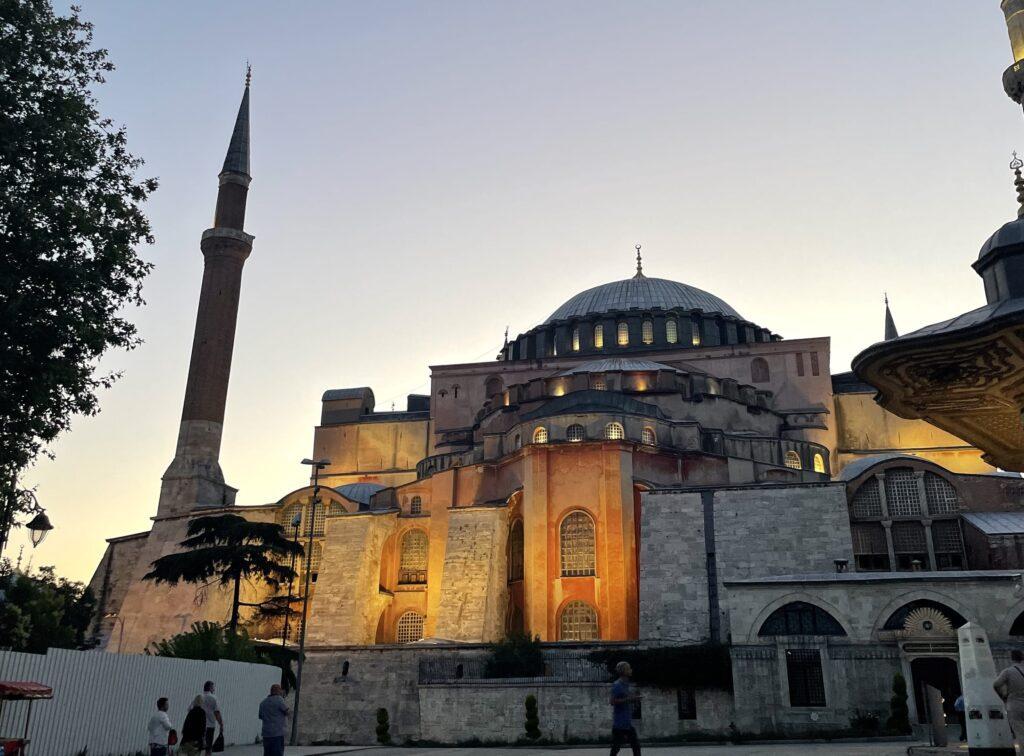
How to Dress for Hagia Sophia?
When visiting Hagia Sophia, it’s important to follow the dress code and mosque etiquette:
- Wear Modest Clothing: Avoid shorts and sleeveless tops. Men and women should dress modestly.
- Women Must Cover Their Heads: Women need to wear a headscarf before entering. You can purchase one near the entrance for €1.
- Body Coverings: If needed, body covers are also available for €3 at the entrance.
- Remove Your Shoes: You must take off your shoes before entering the mosque. Shoe racks are provided.
- Be Respectful: Remember that Hagia Sophia is an active place of worship. Please respect those praying, avoid taking photos of worshippers, and follow the mosque’s rules.
- Stroller Policy: If you’re bringing a stroller, please fold and carry it inside to protect the historic floors.
What to See Inside the Museum Section of Hagia Sophia Mosque?
Mosaics
The mosaics of Hagia Sophia are among its most treasured elements, offering a glimpse into the artistic and religious shifts over centuries. The Deisis mosaic in the southwest gallery, featuring Christ flanked by the Virgin Mary and John the Baptist, is particularly renowned. The Imperial Door mosaic depicts Emperor Leo VI kneeling before Christ, symbolizing the emperor’s humility and devotion. These mosaics, with their intricate designs and historical significance, are must-see features for any visitor.
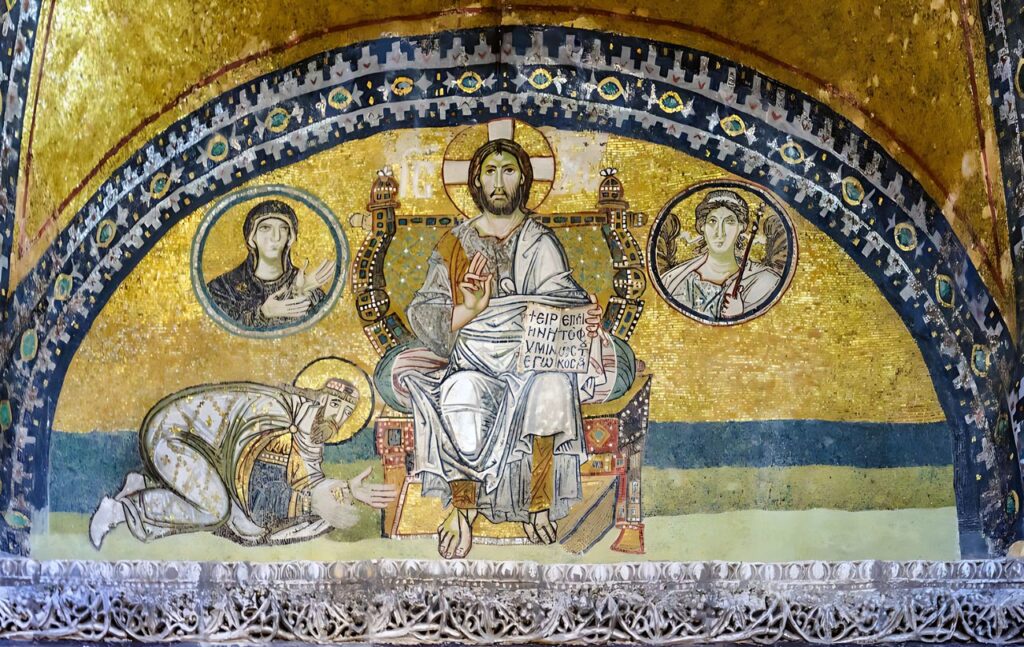
Are the Mosaics in Hagia Sophia Open for Tourists?
In 2025, many of Hagia Sophia’s stunning Byzantine mosaics are accessible to visitors. While most of the mosaics on the upper floor are part of the tourist route, some on the lower level remain less visible.
Upper Floor Mocaics in Hagia Sophia
- Open to Visitors:
- The upper floor of Hagia Sophia showcases some of the most significant Byzantine mosaics from the 11th and 13th centuries.
- Key Mosaics:
- Christ Pantocrator: Depicting the Judgment Day, fully visible.
- Empress Zoe Mosaic: Fully accessible.
- Emperor John II Komnenos Mosaic: Completely open to view.
Ground Floor Mocaics in Hagia Sophia
- Virgin and Child Mosaic:
- Location: Ground floor, visible from the upper galleries.
- Visibility: Partially covered with a curtain due to its proximity to the prayer area.
- Emperor Leo VI Mosaic:
- Location: Above the Imperial Gate.
- Visibility: Not on the tourist route, completely inaccessible.
- Emperors Constantine and Justinian Mosaic:
- Location: South side, in the corridor to the right before exiting the building.
- Tip: This often-overlooked mosaic can be seen just after descending to the ground floor when leaving Hagia Sophia.
Marble Door
The Marble Door, located in the south gallery, separates the area where religious meetings were once held from the rest of the building. This door is not just a physical barrier but a symbolic one, with one side representing heaven and the other hell. It reflects the duality often present in religious architecture and serves as a reminder of the weighty decisions made within these walls.
Grave Marker of Enrico Dandolo
In the upper gallery, opposite the Deisis mosaic, lies the grave marker of Enrico Dandolo, the Doge of Venice who led the Fourth Crusade. His burial within Hagia Sophia symbolizes the complex and often turbulent history between the Byzantine Empire and Western Europe.
Viking Inscription
Among the treasures hidden within Hagia Sophia is a Viking inscription on the marble parapets of the south gallery. The simple phrase, “Halvdan was here,” offers a tantalizing glimpse into the lives of Viking mercenaries who served in the Byzantine army, adding a layer of intrigue to the building’s history.
What to See in The Prayer Hall of Hagia Sophia Mosque?
Note: you can see the praying hall from the galleries on the second floor.
Calligraphic Roundels
The praying hall is adorned with eight large calligraphic roundels, each bearing the names of Allah, Prophet Muhammad, his grandsons Hasan and Hussain, and the four caliphs. Created by the master calligrapher Kazasker Mustafa İzzet Efendi, these roundels are not only impressive in size but also in their craftsmanship, made of linden wood and gilded in gold. They are considered among the largest calligraphy roundels in the Islamic world.
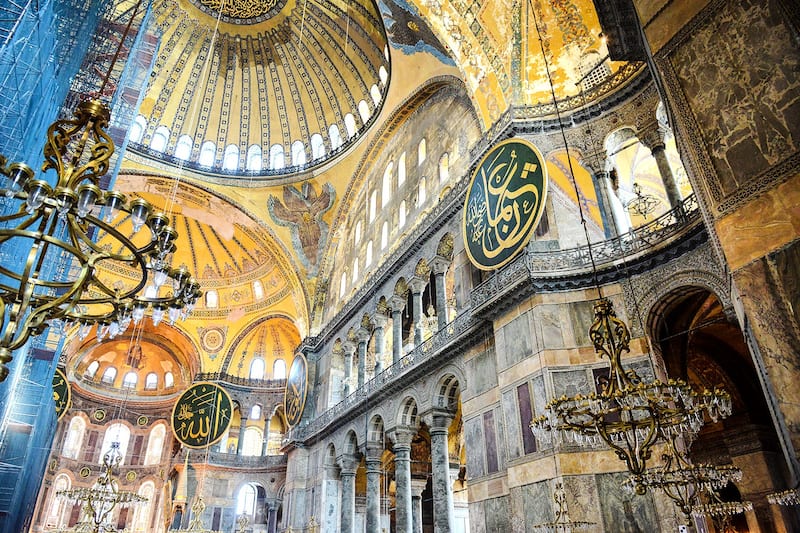
Lustration Urns
At the entrance and in the side naves, you’ll find massive marble urns that date back to the Hellenistic period. Brought from the ancient city of Pergamon during Sultan Murad III’s reign, these urns were used to distribute sherbet on holy nights and during ‘Eid prayers. Each urn can hold up to 1,250 liters, making them not only functional but also impressive examples of Ottoman craftsmanship.
Omphalion
The Omphalion, located near the center of the praying hall, is where Byzantine emperors were crowned. This section, marked by intricate marble circles of varying sizes, highlights the site’s significance as a place of both religious and political power.
Dome (Qubbah)
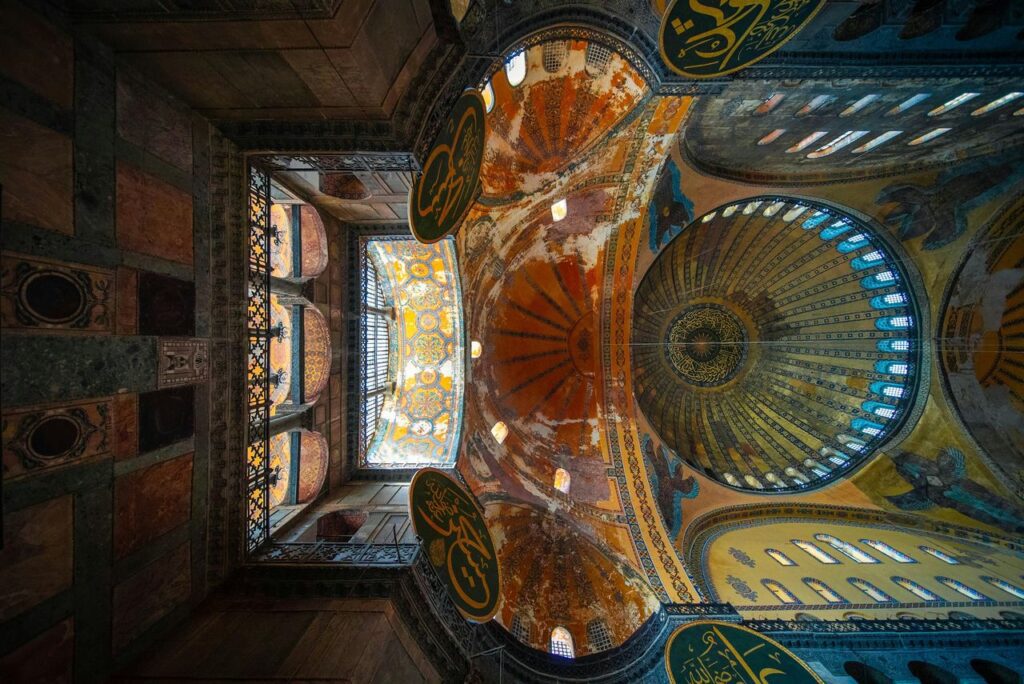
The crowning glory of Hagia Sophia is its massive dome, standing 55.6 meters tall with a diameter of about 32 meters. The dome represents the heavens and the oneness of Allah in Turkish-Islamic architecture. Inscribed on it is a verse from the Qur’an: “Allah is the Light of the heavens and the earth…” This verse, written by Kazasker Mustafa İzzet Efendi, adds a spiritual dimension to the architectural marvel of the dome, which has undergone several restorations to achieve its current form.
What to See Outside Hagia Sophia
Minarets
Hagia Sophia’s four minarets are more than just architectural features; they tell a story of the building’s evolution from a cathedral to a mosque. Each minaret was added during different periods, with the oldest likely dating back to Mehmed the Conqueror’s reign. The minarets on the southwest and northwest sides, built by the famous Ottoman architect Sinan, are particularly striking with their solid, massive lines and 60-meter height. These minarets were embellished with various period decorations, reflecting the building’s rich history.
Hagia Sophia Bathhouse (Hammam)
Just opposite the mosque is the Hagia Sophia Bathhouse, also known as Hürrem Sultan Hamamı. Built by Mimar Sinan in 1553, this elegant structure served as a source of income for the charitable foundations of Hürrem Sultan, wife of Suleiman the Magnificent. Today, it remains one of the most beautiful bathhouses in Istanbul and continues to be in use.
Read Also: Best Turkish Baths and Hammams in Taksim: Istanbul 2024
The Grand Dome
Dominating the cityscape, Hagia Sophia’s grand dome stretches 102 feet in diameter and soars to a height of 180 feet, showcasing the prowess of Byzantine engineering. Supported by four massive pendentives, this remarkable structure seamlessly blends the square base with the circular dome, creating an awe-inspiring sight.
Navigation
Where is the Hagia Sophia: Getting There
Sultan Ahmet, Ayasofya Meydanı No:1, 34122 Fatih İstanbul, Turkey
Find on Maps
Take buses 28, 32, BN1, or EMI. The nearest stop is Sultanahmet Square, just a short walk from Hagia Sophia.
Buses like 35A, 36, 36ES, 38, 38Z, 97, and 92B also serve the area.
The last bus BN1 arrives at Hagia Sophia by 12:18 AM. The closest bus stop, Çatladıkapı – Yenikapı Yönü, is a 13-minute walk away.
Use the Marmaray lines (Ataköy-Pendik or Halkalı-Gebze) from Asian Side / Kadikoy.
The nearest train station is Sirkeci, about a 16-minute walk from Hagia Sophia.
Take the M2 Metro line. Get off at Yenikapi Station, which is a 10-minute walk from Hagia Sophia.
The metro ride from Istanbul Airport takes about 50 minutes with one change on Mecidiyeköy station to the M11 (U) line.
The T1 Tram line will bring you to Sultanahmet Station, a 7-minute walk from Hagia Sophia. You can reach almost all of the touristic zones in Istanbul with T1 tram.
From Istanbul Airport: The distance is 46.2 km. You can reach Hagia Sophia in about an hour. Two main routes are available:
D020: Approximately 1 hour drive.
O-7: Takes around 1 hour and 8 minutes
Naz Otopark: 750 meters away, about an 8-minute walk.
Sports CarPark: Also 750 meters away, roughly a 9-minute walk
Dalbasti Parking: The closest option at 260 meters, about a 3-minute walk.
Ispark Otopark: Only a 2-minute walk away.
Ispark: A 3-minute walk from Hagia Sophia.
FAQ: Hagia Sophia – All Answers
Use this space to provide your website visitors with a brief description on what to expect before clicking on a section title.
Don’t Miss The Best Tours and Cruises in Istanbul
Old City Digital Route №1
A step-by-step guide to uncovering Istanbul’s hidden gems beyond Sultanahmet. Access the route via Google Maps and a handy PDF guide, both packed with:
- Local dining spots for any budget
- Currency exchange tips
- Recommended hotels in Fatih
- Directions from the airport to Sultanahmet
- Souvenir and gift ideas
$9.99
